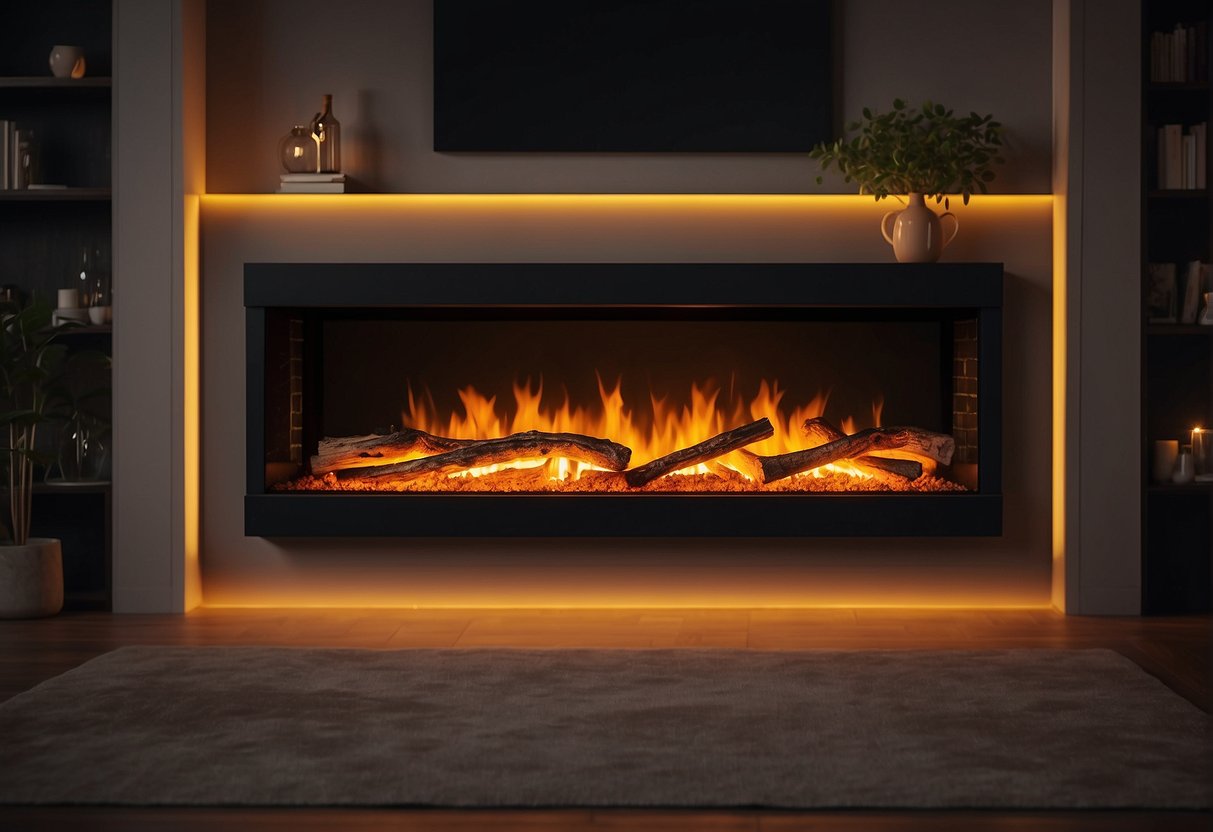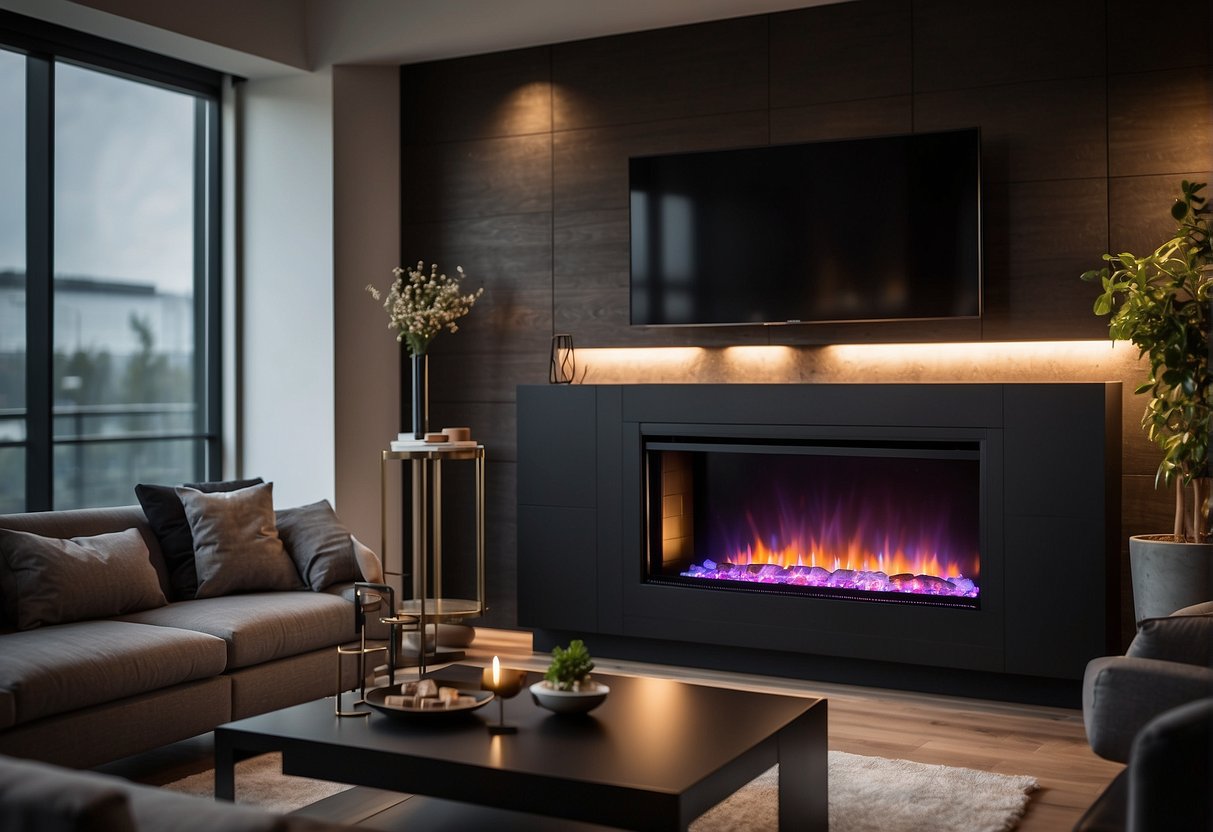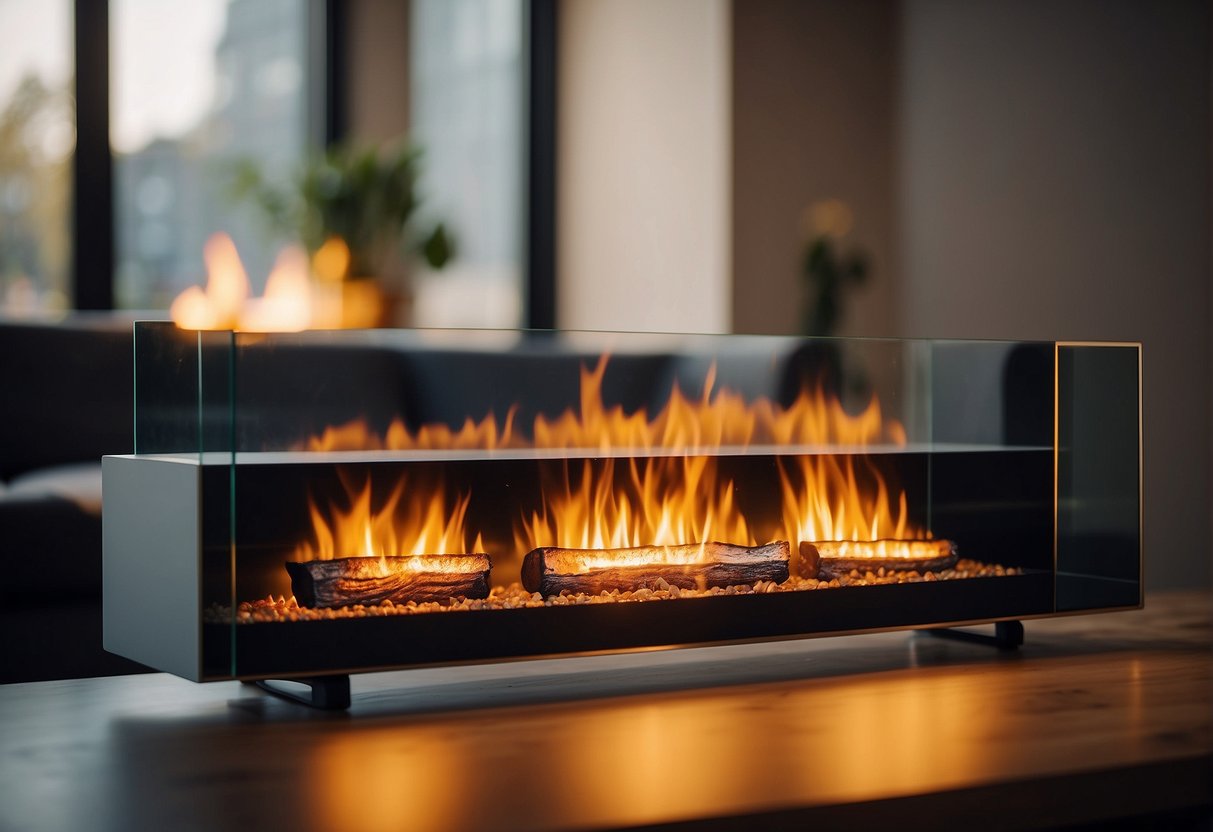Introduction
Electric fireplace inserts offer an appealing alternative to traditional fireplaces, striking a balance between aesthetics and functionality. They are designed to imitate the look and feel of a real wood or gas fire without the associated maintenance or safety concerns. While traditional fireplaces require a chimney and involve combustion processes, electric fireplace inserts simply plug into a household outlet, offering a convenient and low-maintenance solution. Consumers considering an upgrade or addition to their home heating options might contemplate whether the convenience of electric fireplace inserts translates into a worthwhile investment.
The initial cost of electric fireplace inserts, compared to wood or gas fireplaces, can be more favorable, especially when considering installation expenses. There’s no need for venting or major renovations, which may result in lower upfront costs. Beyond installation, they are known for energy efficiency, converting almost all their energy into heat with minimal waste. This could translate into long-term savings on utility bills. However, they also have limitations, such as a shorter lifespan relative to more traditional options, and some might find their simulated flames less satisfactory than the real thing. Consumers must weigh the benefits of efficiency and convenience against the authenticity and potential longevity of wood or gas fireplaces.
Key Takeaways
- Electric fireplace inserts replicate a traditional fireplace with convenient installation and minimal upkeep.
- They often present an affordable initial investment and can be more energy-efficient than traditional options.
- It’s important to consider both the immersive quality of the unit and its expected durability when evaluating worth.
Why Consider an Electric Fireplace Insert?
Electric fireplace inserts offer a blend of energy efficiency, ease of use, and aesthetic appeal. They are designed to fit into existing fireplaces, serving as a cost-effective heating solution with low maintenance and high style versatility.
Energy Efficiency and Heat Output
Electric inserts convert nearly 100% of their energy into heat, making them incredibly energy-efficient. They provide a precise control of heat output, measured in British Thermal Units (BTUs), which ensures effective heating of your space without wasting energy and contributing to lower energy bills. Some models come with a remote control feature, enabling users to adjust the temperature conveniently.
Installation and Maintenance
Unlike traditional fireplaces that require a chimney and professional installation, electric fireplace inserts are easy to install, often only needing to be placed in an existing fireplace and plugged into a standard electrical outlet. They demand little maintenance compared to gas or wood-burning alternatives, as there is no need for venting or cleaning up ash and soot, making them a hassle-free addition to any home.
Design and Aesthetics
When it comes to design, electric inserts offer a range of flame effects and flame colors to create the desired ambiance. Users can enjoy the cozy aesthetic of a traditional fireplace, including realistic flame effect and optional glass doors, without the mess. With a variety of styles to choose from, an electric insert can be a statement piece that enhances the overall design and feel of a room.
Comparing Electric Inserts with Other Fireplace Types
When considering a fireplace for your home, the comparison between electric inserts and traditional wood or gas fireplaces is crucial. These differences primarily revolve around efficiency, installation, maintenance, and environmental impact.
Electric vs. Wood Fireplaces
Electric fireplace inserts offer a high level of energy efficiency, converting nearly 100% of their energy into heat. In contrast, traditional wood fireplaces can be less energy efficient due to heat loss up the chimney. Installations for electric inserts are generally simpler, not requiring a chimney or venting, making them a cost-effective and eco-friendly option.
On the other hand, wood fireplaces provide a real flame with a traditional ambiance but involve more complexities, such as the need for a fully-functioning chimney, regular cleaning to prevent smoke backdraft, and buying or chopping wood. The ongoing maintenance and fuel costs, combined with the smoke produced, make wood fireplaces less eco-friendly compared to their electric counterparts.
Electric vs. Gas Fireplaces
Electric inserts and gas fireplaces both provide heating without the production of smoke or the need for wood. However, electric inserts are often more energy-efficient and eco-friendly due to their lack of emissions. They also tend to have lower installation and upkeep costs because they don’t require venting through a chimney.
Gas fireplaces might offer a more authentic flame effect compared to electric inserts and are available in vented and ventless models. Vented models require a chimney, similar to wood fireplaces, which can be a drawback in terms of energy efficiency. Fuel costs for gas fireplaces depend on local gas prices, which can fluctuate, potentially affecting long-term expenses.
Selecting the Right Electric Fireplace Insert
When investing in an electric fireplace insert, it’s essential to consider both size compatibility with your existing space and the specific features that suit your needs for functionality and aesthetics.
Size and Coverage Considerations
Dimensions are crucial when choosing an electric fireplace insert. Measure the height, width, and depth of your current fireplace to ensure the insert will fit seamlessly. For those without an existing fireplace, consider whether a recessed or wall-mounted option is more suitable. Coverage is equally important, as inserts vary in heat output, with some capable of warming larger spaces while others are designed for smaller rooms.
- Small Space: Choose inserts up to 400 square feet.
- Medium Space: For areas up to 600 square feet.
- Large Space: Look for inserts designed for 1000 square feet and beyond.
Features and Controls
The features of an electric fireplace insert enhance both its functionality and appeal. Key considerations include the flame effect, which should mimic the authentic look of a real fire. Look for options with adjustable intensity settings and brightness levels to tailor the ambiance to your preference. Controls can vary from traditional switches to touchscreen panels and remote controls for added convenience. Some models offer timers and dimmer functions, allowing you to schedule operation times and adjust lighting as desired.
- Flame Effect Customization: Options should include a range of brightness levels.
- Controls: Preference for remote control, touchscreen operation, or manual controls.
- Extra Features: Consider timers and dimmer functions for improved usability.
Cost Analysis
When considering the purchase of an electric fireplace insert, evaluating both the initial investment and the ongoing expenses is crucial. This cost analysis will provide a clear understanding of what buyers can expect financially.
Upfront and Long-Term Costs
Electric Fireplace Insert Initial Costs: The price range for these units varies widely. On the lower end, homeowners can find models starting around $200, while more sophisticated options with increased heat output and style elements can reach upwards of $2,200. Installation costs should also be factored in, which can add to the overall upfront cost.
Energy Efficiency and Fuel Costs: Unlike traditional fireplaces, electric fireplace inserts are powered by electricity, which may lead to more predictable fuel costs. The cost to run an electric fireplace is relatively low, typically under a dollar per day for a few hours of use. It’s influenced by the power rating of the unit (often around 1500 watts) and the local electricity rates.
Maintenance Expenses: These units tend to have lower maintenance requirements compared to wood or gas fireplaces. There is no need to clean chimneys or service gas lines, which can save substantial amounts over time. The absence of such servicing not only lowers long-term costs but also appeals to those looking for a hassle-free heating solution.
Potential for Lower Energy Bills: An electric fireplace insert can be cost-effective when used to heat individual rooms, allowing the main heating system to run less. Targeted heating, known as zone heating, can result in lower energy bills as it reduces the overall energy consumption of a home.
Higher Upfront Costs vs. Long-Term Savings: While it’s true that electric fireplace inserts can have higher upfront costs than other heating solutions, their energy efficiency and lower maintenance can offset this over time, possibly leading to an overall cost-effective experience for the homeowner.
Benefits and Limitations
When assessing whether electric fireplace inserts are worth the investment, it’s imperative to weigh their benefits against their inherent limitations. Each factor, ranging from maintenance to energy efficiency, plays a crucial role in determining their value and suitability as a heating option.
Advantages of Electric Fireplace Inserts
Ease of Installation: Electric fireplace inserts typically require no structural modifications for installation. They are easy to set up as most units are designed for plug-and-play functionality, requiring only an electrical outlet.
Safety and Maintenance: With no real flame to manage, electric fireplace inserts offer a safe to use alternative to traditional fireplaces. The absence of combustible byproducts means little maintenance is involved, a damp cloth or vacuum handling most cleaning needs.
Energy Efficiency: Electric fireplaces are known for being highly energy efficient. They convert nearly 100% of their input energy into heat, which can make them more cost-effective in operation compared to other types.
Supplemental Heat and Aesthetics: While electric fireplace inserts are not typically recommended as a primary heat source, they can provide supplemental heat to a room. Additionally, they add an aesthetic charm with lifelike flames that provide the ambiance of a traditional fireplace without the mess.
The limited heat output of electric fireplace inserts, however, means they are best used in conjunction with another heating system. This positions them as a supplemental heat source rather than a standalone solution in colder climates.
Furthermore, while electric fireplaces are generally cost-effective to operate, the upfront cost may vary, with more feature-rich models commanding higher prices. This, paired with the potential of a shorter lifespan due to electronic components, suggests a careful consideration of the long-term value. Nevertheless, the heat they provide is often deemed sufficient for personal comfort and can contribute to a reduction in central heating costs.
From the aesthetics perspective, many users find the modern design of electric fireplace inserts to be a sleek addition to their interior decor. The combination of heating efficiency and the cozy ambiance can enhance the living environment, making it not only warm but visually inviting as well.
Frequently Asked Questions
In exploring the value of electric fireplace inserts, it’s crucial to address common queries potential buyers might have. These questions range from the practical benefits and drawbacks of electric fireplace inserts, to safety considerations, and the impact on home ambiance.
What are the pros and cons of installing an electric fireplace insert?
Electric fireplace inserts offer a hassle-free maintenance experience and energy efficiency, as they convert all their energy into heat. However, they may have more crevices that require cleaning and might not provide the same feel as a traditional fireplace.
How does the energy consumption of electric fireplace inserts compare to other heating options?
Compared to other heating solutions, electric fireplace inserts are very efficient, with a high percentage of electric energy direct converted into heat, potentially leading to lower operating costs. They can be particularly cost-effective for heating individual rooms as opposed to entire homes.
Is it safe to leave an electric fireplace insert running overnight?
Leaving an electric fireplace insert running overnight is generally considered safe as they do not produce real flames or emit carbon monoxide. However, as with all electrical appliances, it is recommended to follow manufacturer guidelines and safety instructions to mitigate any risks.
What should be considered when choosing the best electric fireplace insert for a home?
When selecting an electric fireplace insert, one should consider the size of the room, the insert’s heat output, and the design aesthetic. Compatibility with the existing fireplace space is also critical, as are local regulations regarding the installation of such appliances.
Can electric fireplace inserts effectively enhance the ambiance of a room?
Electric fireplace inserts can greatly enhance a room’s ambiance by providing the visual appeal of a real fireplace without the mess. With technology like self-cleaning insulated glass and various flame settings, inserts serve as an inviting focal point in any space.
How do electric fireplace inserts measure up in terms of overall cost-effectiveness?
Electric fireplace inserts are known for their cost-effectiveness, with the expense varying based on model and installation requirements. Over time, their efficient operation can result in lower heating costs, making them a financially sound choice for many homeowners.
Conclusion
Electric fireplace inserts are a cost-effective and efficient heating solution for many homeowners. They convert energy to heat at nearly 100%, leading to significant operational savings over time. The ease of installation, absence of a need for chimneys or venting, and low maintenance requirements contribute to their overall value.
Homeowners may find that electric fireplace inserts offer a cleaner alternative to traditional wood or gas fireplaces, eliminating the need for purchasing fuel and dealing with soot or ash. With advancements in technology, some models can reduce heating costs by up to 40%, becoming a smart investment for those looking to add warmth to their homes without incurring high energy bills.
Safety is another advantage, as electric fireplaces do not produce real flames, thus eliminating the risks of fire-related accidents. They often stay cool to the touch, offering peace of mind for families with children and pets.
Considering the balance between upfront costs and long-term benefits, electric fireplace inserts come across as a worthwhile investment for individuals seeking a blend of ambience, convenience, and energy efficiency in their heating appliance.
In making a decision, potential buyers should weigh these benefits against their specific needs, room size, and design preferences to determine if an electric fireplace insert aligns with their home and lifestyle.
Understanding Electric Fireplace
Energy-efficient heating
Savings on heating costs
Easy installation and lower upfront costs








